
Continue reading “Peru is the guest country of honor at ‘Asia Fruit Logistica ON 2020’”

Continue reading “Peru is the guest country of honor at ‘Asia Fruit Logistica ON 2020’”


Thailand LAB INTERNATIONAL ฉลองครบรอบ 10 ปี เดินหน้าจัดงานแสดงเทคโนโลยีห้องปฏิบัติการทางวิทยาศาสตร์ เจาะลึกความคืบหน้าการวิจัยวัคซีน COVID-19 จากหน่วยงานระดับประเทศ 28-30 ตุลาคมนี้ ไบเทค กรุงเทพฯ
ข่าวประชาสัมพันธ์ – 16 กันยายน 2563, กรุงเทพฯ
วีเอ็นยู เอเชีย แปซิฟิค ผู้จัดงาน Thailand LAB INTERNATIONAL ร่วมกับพันธมิตรการจัดงานอย่าง สมาคมการค้าวิทยาศาสตร์และเทคโนโลยี (STTA) พร้อมด้วยศูนย์ความเป็นเลิศด้านชีววิทยาศาสตร์ (องค์การมหาชน) หรือ TCELS ผู้ร่วมจัดงาน Bio Asia Pacific ตลอดจนหน่วยงานภาครัฐ เอกชนและสมาคมต่างๆ ยืนยันความพร้อมในการจัดงาน Thailand LAB INTERNATIONAL 2020 งานแสดงเทคโนโลยีเครื่องมือห้องปฏิบัติการทางวิทยาศาสตร์ ครั้งที่ 10 ครอบคลุมงานวิเคราะห์ ทดสอบ สอบเทียบ และการควบคุมคุณภาพ ตามมาตรฐานในห้องปฏิบัติอย่างครบวงจรในระดับสากล ครอบคลุมทุกกลุ่มอุตสาหกรรม พร้อมนำเสนอเสนองานวิจัย นวัตกรรม และ โซลูชั่นต่างๆ เพื่อพาประเทศก้าวผ่านวิกฤต COVID-19 โดยปีนี้รูปแบบการจัดงานนิทรรศการและการประชุมสัมมนาเป็นแบบ Hybrid โดยผสมผสานการจัดงานนิทรรศการและการประชุมแบบปกติ (Physical Exhibition & Conference) กับเทคโนโลยีออนไลน์สมัยใหม่ ทั้ง Mobile Application และ Online Business Matching Program นอกจากนี้ยังมีการนำเทคโนโลยี Live Streaming & Broadcasting เข้ามาช่วยในการเพิ่มช่องทางการถ่ายทอดสดงานประชุมสัมมนา ควบคู่ไปกับการจัดการประชุมสัมมนาผ่านระบบ Virtual Conference เพื่อให้กลุ่มคนที่สนใจเข้าร่วมงานสัมมนาทั้งในและต่างประเทศที่ไม่สะดวกเข้าร่วมงาน ได้เข้ามามีส่วนร่วมไปกับงาน Thailand LAB INTERNATIONAL 2020 ซึ่งจะจัดขึ้นระหว่างวันที่ 28-30 ตุลาคม 2563 ณ ศูนย์นิทรรศการและการประชุมไบเทค กรุงเทพฯ งานแรกและงานเดียวของปีที่คุณจะได้อัพเดทเทคโนโลยีเครื่องมือห้องปฏิบัติการ นวัตกรรมต่างๆ และความคืบหน้าของการผลิตวัคซีน COVID-19 และ จากหน่วยงานระดับแนวหน้าของประเทศ
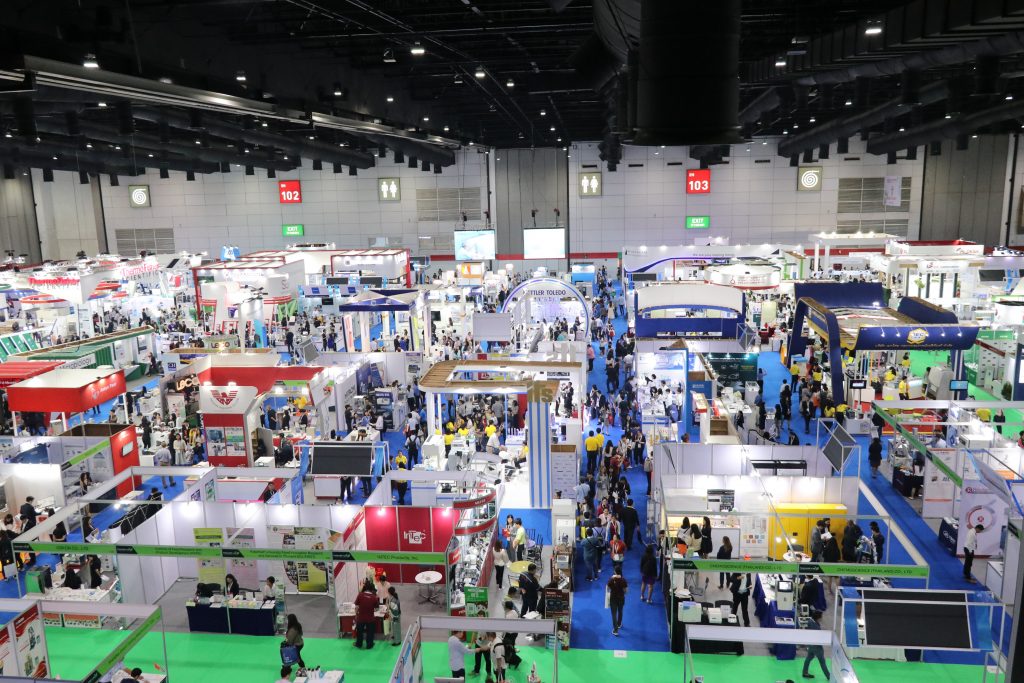
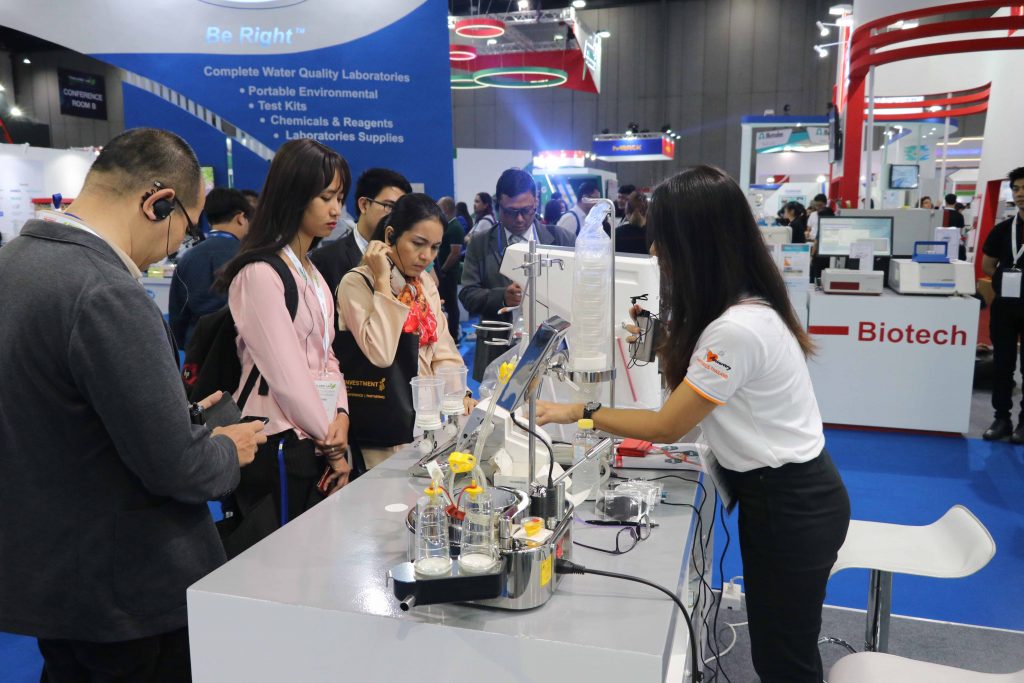
คุณอนุชา พันธุ์พิเชฐ ผู้จัดการโครงการ Thailand LAB INTERNATIONAL กล่าวว่า “การระบาดของ COVID-19 ตั้งแต่เดือนธันวาคม 2562 ส่งผลกระทบต่อทุกภาคส่วนทั่วโลก ไม่เว้นแม้แต่วงการห้องปฏิบัติการทางวิทยาศาสตร์ นักวิทยาศาสตร์ไม่ว่าจะเป็นนักวิจัย ผู้ที่ทำงานด้านควบคุมและประกันคุณภาพในโรงงาน หรือแม้แต่นิสิตนักศึกษา ต่างต้องการผลแล็บที่ถูกต้องแม่นยำมากขึ้น รวมทั้งภาระงานที่ลดลงและความปลอดภัยของผู้ปฏิบัติงาน โดยเฉพาะอย่างยิ่งนักเทคนิคการแพทย์ที่ต้องทำงานสนับสนุนการวิจัย การวินิจฉัย และการรักษาอาการของผู้ป่วยโรค COVID-19”
“Thailand LAB INTERNATIONAL มุ่งมั่นมาตลอด 10 ปีกับการกระตุ้นอุตสาหกรรมเครื่องมือห้องปฏิบัติการและพัฒนาเทคโนโลยีต่างๆ เพื่อส่งเสริมความเป็นอยู่ที่ดีขึ้นของสังคม จึงนับเป็นช่วงเวลาที่เหมาะสมที่สุดที่จะรวมผู้เชี่ยวชาญและผู้ที่ทำงานอันเกี่ยวข้องกับการหาทางออกให้กับสถานการณ์ COVID-19 นี้ มารวมตัวกันเพื่อแบ่งปันข่าวสารข้อมูล ผลวิเคราะห์ วิจัย และความคืบหน้าของการผลิตวัคซีน อันจะเป็นทางรอดของสถานการณ์ในครั้งนี้ ซึ่งภายในงานของเรา ท่านจะได้พบกับ ผู้ประกอบการที่เป็นผู้ผลิตของเครื่องมือที่ใช้ในห้องปฏิบัติการจากทั่วทุกมุมโลก พร้อมกับงานสัมมนาวิชาการที่จัดโดยหน่วยงานชั้นแนวหน้าของประเทศ อาทิ กรมวิทยาศาสตร์บริการ กรมปศุสัตว์ ศูนย์ความเป็นเลิศด้านชีววิทยาศาสตร์ (องค์การมหาชน) หรือ TCELS สถาบันวิจัยวิทยาศาสตร์และเทคโนโลยีแห่งประเทศไทย สถาบันอาหาร สมาคมเทคนิคการแพทย์แห่งประเทศไทย กลุ่มเทคโนโลยีชีวภาพ สภาอุตสาหกรรมแห่งประเทศไทย สมาคมเทคโนโลยีชีวภาพแห่งประเทศไทย สมาคมพิษวิทยาแห่งประเทศไทย สมาคมไวรัสวิทยา สมาคมชีวนิรภัย ฯลฯ ซึ่งข้อมูลต่างๆ ที่ทุกภาคส่วนจะมานำเสนอจะเป็นข้อมูลสำคัญที่คนในอุตสาหกรรมไม่ควรพลาด” คุณอนุชา กล่าว
ไฮไลท์ของงานปีนี้!
-ร่วมฉลองครบรอบ 10 ปี งาน Thailand LAB INTERNATIONAL ภายใต้คอนเซปท์ New Normal in LAB Exhibition
-นำเสนอการจัดงานแบบ Hybrid Exhibition ผสมผสานการจัดนิทรรศการและการประชุมกับเทคโนโลยีออนไลน์แพลทฟอร์ม
-รวมสุดยอดเทคโนโลยี เครื่องมือในห้องปฏิบัติการทางวิทยาศาสตร์ที่ครอบคลุมทุกกลุ่มอุตสาหกรรม จากแบรนด์ชั้นนำทั่วโลก
-เต็มอิ่มกับงานสัมมนามากมาย ทั้งผสามผสานรูปแบบงานสัมมนาภายในงานและออนไลน์ เจาะลึกประเด็นร้อน COVID-19
-พบกับเวทีเจรจาธุรกิจใหม่ล่าสุด “Bio Square” พร้อมเชื่อมโลกออนไลน์ผ่านระบบ Live Streaming
-งานประชุม Bio Asia Pacific: Virtual & Live เน้นด้าน Life Sciences ผ่านแพลทฟอร์มออนไลน์เต็มรูปแบบกว่า 30 หัวข้อ พร้อมวิทยากรชั้นนำจากทั่วโลก
-บริการจับคู่ทางธุรกิจผ่านระบบ Business Matching และการนำเสนอไอเดียธุรกิจเพื่อการลงทุนผ่าน Business Pitching
-สัมผัสฟังก์ชั่นใหม่ล่าสุดผ่านระบบ Thailand LAB Event App เพื่อตอบสนองทุกกิจกรรมแบบไร้พรมแดน เริ่มดาว์นโหลด 1 ตุลาคมนี้
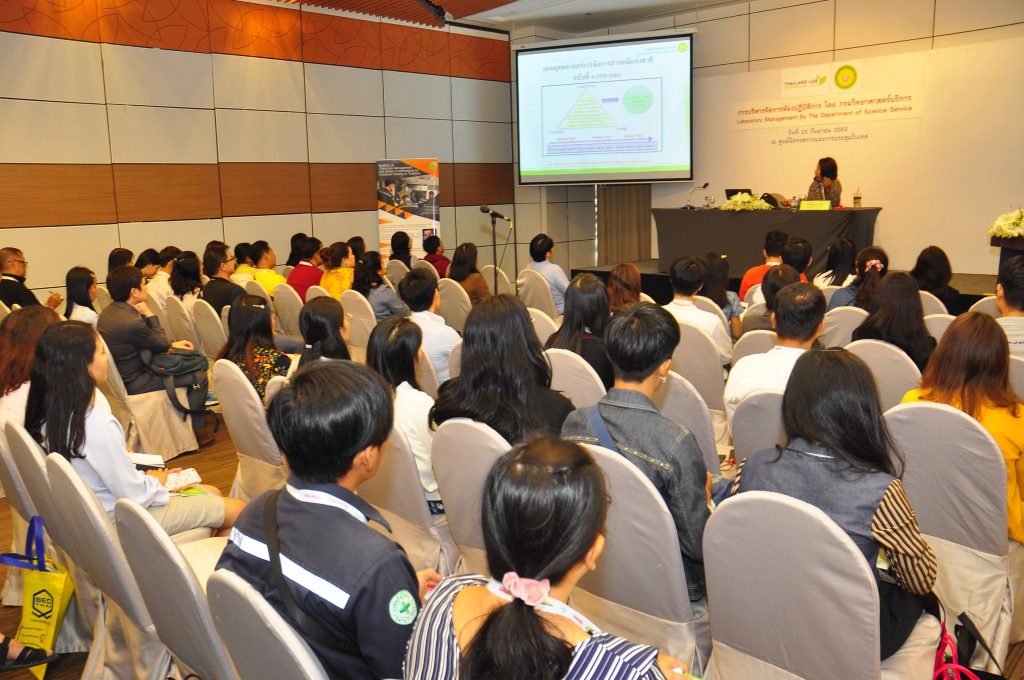

การประชุมที่น่าสนใจ
| Medical Laboratories on the Front Lines: Fighting COVID-19 | สมาคมเทคนิคการแพทย์แห่งประเทศไทย (AMTT) |
| การใช้จุลินทรีย์สำหรับผลิตปุ๋ยชีวภาพ ควบคุมโรคพืช และกระตุ้นการเจริญเติบโตของพืชเพื่อการเกษตรที่ยั่งยืน | สมาคมเทคโนโลยีชีวภาพแห่งประเทศไทย (TSB) |
| National Program in New Normal Lifestyle for COVID-19 | สมาคมพิษวิทยาแห่งประเทศไทย (TST) |
| กัญชาและผลิตภัณฑ์กัญชา : คุณภาพความปลอดภัย | สถาบันวิจัยวิทยาศาสตร์และเทคโนโลยีแห่งประเทศไทย TISTR) |
| Revolutionizing Animal Healthcare through Nanotechnology | สมาคมเวชศาสตร์ชันสูตรทางสัตวแพทย์ไทย (TAVLD) |
| Update Vaccine COVID-19 | Biotech Industry Club สภาอุตสาหกรรมแห่งประเทศไทย |
| Essential Knowledge of SARS-CoV-2 for Laboratory People | สมาคมไวรัสวิทยา (ประเทศไทย) |
| Laboratory Biosafety Guidance related to the COVID-19:
New Normal in Thailand |
สมาคมชีวนิรภัย (ประเทศไทย) |
| ASEAN Food Safety Forum #8 “Healthier and Safer:
Food Security in Post COVID-19 Era” |
ศูนย์นวัตกรรมวิทยาการอาหาร ม.เกษตรศาสตร์ – KU-FIRST |
| Food Microbiology Contest #4
Review of ISO 17025:2017 and Case Studies |
นิตยสาร INNOLAB |
สำหรับงาน Thailand LAB INTERNATIONAL 2020 จัดขึ้นระหว่างวันที่ 28-30 ตุลาคม 2563 ณ ไบเทค กรุงเทพฯ ทางผู้จัดงานฯ ได้จัดเตรียมมาตรการรักษาความปลอดภัยสูงสุดเพื่อให้ทุกท่านมั่นใจได้ว่า เราให้ความสำคัญกับความปลอดภัยของท่านตั้งแต่ก้าวแรกจนถึงก้าวสุดท้ายที่ท่านอยู่ภายในงานของเรา ขอความร่วมมือผู้ที่สนใจเข้าเยี่ยมชมงานปฏิบัติตามระเบียบการเข้าชมงานอย่างเคร่งครัด และลงทะเบียนล่วงหน้าเพื่อการเก็บข้อมูลและตรวจสอบจำนวนผู้เข้าชมงานในแต่ละวันตามข้อกำหนดของกระทรวงสาธารณะสุข (ห้ามเด็กต่ำกว่า 15 ปีเข้าชมงาน และกรุณาแต่งกายด้วยชุดสุภาพ) ลงทะเบียนเข้างานฟรี ที่ https://thailandlab2020.com/Registration/RegisForm.aspx?codeInv=LAB22
เยี่ยมชมเว็บไซต์หลักงานได้ที่ www.thailandlab.com หรือ www.bioasiapacific.com
—————————————————————————————————————————————————————-
ฝ่ายสื่อการการตลาด และ เยี่ยมชมงานแบบกลุ่ม กรุณาติดต่อ
คุณแสงทิพ เตชะปฏิภาณดี (saengtip@vnuasiapacific.com) โทร. 02-1116611 ต่อ 330
คุณศศิวิมล นิติกรวรากุล (sasiwimon@vnuasiapacific.com) โทร. 02-1116611 ต่อ 331
หลายปีมานี้ประเทศไทยเป็นจุดหมายปลายทางของนักท่องเที่ยวจากทั่วทุกมุมโลก อุตสาหกรรมการท่องเที่ยวเติบโตเป็นอย่างมาก รวมถึงร้านอาหารและคาเฟ่ซึ่งมีจำนวนมากเช่นกัน ในทุกๆ ปี จึงมีการจัดนิทรรศการอย่างต่อเนื่อง ผู้ประกอบการ HoReCa (โรงแรม ร้านอาหาร และคาเฟ่) ต่างมีความต้องการ ในด้านข้อมูล ประสิทธิภาพ และนวัตกรรมใหม่ๆ เพิ่มขึ้นเรื่อยๆ และด้วยสถานการณ์การแพร่ระบาดโรคโควิด-19 ส่งผลให้โรงแรมเกิดความต้องการเทคโนโลยีแบบไม่ต้องสัมผัส และการควบคุมต้นทุน ร้านอาหารมีความต้องการจัดส่ง แบบเดลิเวอรี่เพิ่มขึ้น รวมถึงร้านเครื่องดื่มหรือร้านคาเฟ่ที่นิยมเครื่องดื่มแบบเชคมากขึ้น การเริ่มตระหนักถึงการอนุรักษ์ สิ่งแวดล้อมและลดการใช้พลาสติก ทำให้เกิดความต้องการใหม่ๆ ขึ้น
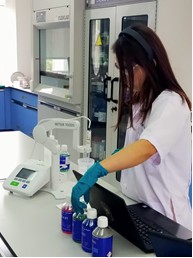

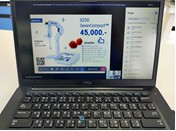
กรุงเทพฯ, 3 กันยายน 2563
บริษัท เมทเล่อร์-โทเลโด (ประเทศไทย) จำกัด จัดสัมมนาวิชาการหัวข้อ “การเตรียมความพร้อมสำหรับเครื่องมือวิเคราะห์ในห้องปฏิบัติการ” ในรูปแบบการถ่ายทอดสดผ่านระบบออนไลน์ประชุมทางไกล ซึ่งช่วยในเรื่องการเว้นระยะห่างทางสังคมได้เป็นอย่างดี ทั้งนี้ แม้จะมีการเปลี่ยนรูปแบบการจัดสัมมนา แต่เนื้อหายังคงเป็นประโยชน์แก่กลุ่มลูกค้าสูงสุด ไม่ว่าจะเป็น การสาธิตตัวอย่างของสารให้ได้ศึกษาพร้อมกัน การสอนการใช้งานและอ่านค่าเครื่องมืออย่างละเอียด โดยวิทยากรผู้เชี่ยวชาญจาก เมทเล่อร์-โทเลโด พร้อมส่งต่อความรู้ในเรื่องเครื่องมือให้ลูกค้าได้เข้าใจอย่างถ่องแท้ก่อนตัดสินใจรับบริการจากทางบริษัทฯ การจัดสัมมนาในครั้งนี้มีกระแสตอบรับเป็นอย่างดี ทาง เมทเล่อร์-โทเลโด ขอขอบคุณลูกค้าที่สนับสนุนมาโดยตลอด และหวังเป็นอย่างยิ่งที่จะให้บริการกับทุกท่านในอนาคต

กรุงเทพฯ 9 กันยายน 2563 – สถาบันพัฒนาผู้ประกอบการการค้ายุคใหม่(NEA) กรมส่งเสริมการค้าระหว่างประเทศ กระทรวงพาณิชย์ ร่วมผลักดันการสร้างเครือข่ายธุรกิจส่งออกให้กับผู้ประกอบการไทยกว่า 800 ราย ผ่านโครงการ Smart Exporter เพื่อสร้างทางรอดในช่วงที่ทั่วโลกประสบปัญหาทางเศรษฐกิจ และการค้าระหว่างประเทศชะลอตัว รวมถึงผลักดันให้แต่ละธุรกิจได้มีโอกาสเข้าถึงตลาดที่มีศักยภาพเพิ่มมากขึ้น พร้อมชี้ผลสำเร็จจากการจัดโครงการที่ผ่านมา เกิดมูลค่าทางการค้ากว่า 64,000 ล้านบาทและทำให้ผู้ประกอบการไทยได้มีโอกาสเจาะตลาดต่างประเทศได้มากขึ้น นอกจากนี้ ยังได้ดึงนักส่งออกไทยร่วมแชร์ประสบการณ์และกลยุทธ์การทำตลาดธุรกิจมะพร้าวแปรรูปในช่วงที่เกิดกระแสการต่อต้านมะพร้าวไทย รวมถึงเทคนิคการขยายตลาดไปในต่างประเทศ
นายสมเด็จ สุสมบูรณ์ อธิบดีกรมส่งเสริมการค้าระหว่างประเทศ กล่าวว่า กรมส่งเสริมการค้าระหว่างประเทศมีเป้าหมายสำคัญที่จะพัฒนาศักยภาพของผู้ประกอบการธุรกิจการค้าระหว่างประเทศให้สามารถดำเนินธุรกิจได้ในทุกบริบท โดยเฉพาะในสถานการณ์ปัจจุบันที่จำเป็นต้องสร้างทางรอดให้กับผู้ประกอบการผ่านการบ่มเพาะเทคนิคและองค์ความรู้ รวมถึงผ่านกิจกรรมต่าง ๆ ซึ่งกลยุทธ์ที่สำคัญด้านหนึ่งคือ การสนับสนุนให้เกิดการรวมกลุ่มทางการค้า รวมถึงสร้างการเติบโตในรูปแบบครือข่ายเพื่อให้การประสบความสำเร็จในมิติต่าง ๆ เป็นไปในแบบห่วงโซ่และเกื้อกูล ทั้งยังเป็นการสร้างความแข็งแกร่งจากการที่ต่างฝ่ายต่างได้รับประโยชน์จากความร่วมมือ ดังที่จะเห็นได้ในหลาย ๆ ประเทศทั่วโลก
ที่ผ่านมาสถาบันพัฒนาผู้ประกอบการการค้ายุคใหม่ หรือ NEA จึงได้จัดหลักสูตร “ผู้ส่งออกอัจฉริยะ : Smart Exporter” ซึ่งถือเป็นอีกหนึ่งเครื่องมือที่สำคัญในการพัฒนาศักยภาพผู้ประกอบการไทยไปพร้อมๆ กับการพัฒนาสินค้าและบริการให้ตรงกับความต้องการของตลาดต่างประเทศ ทั้งนี้ กรมได้มีการจัดโครงการฝึกอบรม “ผู้ส่งออกอัจฉริยะ : Smart Exporter” ตั้งแต่รุ่นที่ 1 จนถึงรุ่น 19 ซึ่งหลักสูตรดังกล่าวสามารถผลิตนักรบทางการค้าเป็นผลสำเร็จ จำนวนทั้งสิ้น 871 ราย และสามารถสร้างมูลค่าส่งออกประมาณ 64,300 ล้านบาทในช่วง 5 ปีที่ผ่านมา ซึ่งในปีหน้า กรมจะเปิดรับสมัครผู้ประกอบการเข้าร่วมหลักสูตร “ผู้ส่งออกอัจฉริยะ : Smart Exporter” รุ่นที่ 20 และ 21 โดยจะจัดทั้งในกรุงเทพฯและภูมิภาค เพื่อปูทางการทำธุรกิจส่งออกให้ไปถึงในระดับภูมิภาค และส่งผลให้การขยายตัวทางเศรษฐกิจเป็นไปอย่างทั่วถึง

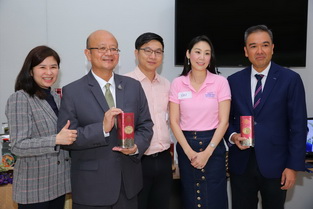
นายสมเด็จ กล่าวเพิ่มเติมว่า สำหรับการสร้างเครือข่ายและการส่งเสริมให้เกิดการรวมกลุ่มทางการค้านั้น สิ่งสำคัญที่กรม มีความมุ่งหวังให้เกิดผลสัมฤทธิ์กับผู้ประกอบการและส่งต่อไปยังภาพรวมของเศรษฐกิจไทย คือ 1.ทำให้ผู้ประกอบการมีความเชื่อมั่นและส่งเสริมภาวะผู้นำให้กับตนเอง ซึ่งถือเป็นสิ่งสำคัญที่จะทำให้ธุรกิจส่งออกของไทยเป็นที่ยอมรับผ่านภาพลักษณ์ที่น่าเชื่อถือ และเป็นตัวแปรสำคัญที่จะทำให้แต่ละอุตสาหกรรม หรือแต่ละธุรกิจก้าวสู่ผู้นำในระดับภูมิภาคหรือระดับโลก 2.เมื่อเกิดการรวมกลุ่มจะทำให้ผู้ประกอบการไทยมีอำนาจและสามารถต่อรองการค้าได้ในหลาย ๆ บริบท ซึ่งเป็นความได้เปรียบอย่างหนึ่งทางเศรษฐกิจทำให้ธุรกิจเล็ก ๆ ที่มารวมตัวกันได้รับผลประโยชน์ต่าง ๆ เทียบเท่ากับกลุ่มธุรกิจขนาดใหญ่ในหลากหลายด้าน และมีวิธีการจัดการองค์กรด้วยเทคนิคที่หลากหลายขึ้น 3.ทำให้ในบางธุรกิจที่ยังเข้าไม่ถึงในบางตลาดได้มีการเรียนรู้ และนำไปต่อยอดเพื่อขยายสินค้าและบริการไปยังประเทศเป้าหมายได้ในอนาคต และ 4 .เป็นการเปิดโอกาสให้ผู้ประกอบการในระดับท้องถิ่น หรือในระดับภูมิภาค (Local) ได้มีโอกาสนำพาตนเองก้าวสู่ระดับสากล ซึ่งจะส่งผลไปถึงการจ้างงาน และเศรษฐกิจในระดับท้องถิ่นที่เติบโตขึ้น
ด้าน นางอารดา เฟื่องทอง ผู้อำนวยการสถาบันพัฒนาผู้ประกอบการการค้ายุคใหม่(NEA) กล่าวว่า เพื่อเป็นการเชื่อมความสัมพันธ์และขยายเครือข่ายผู้ประกอบการ Smart Exporter ในแต่ละรุ่น เพื่อให้เกิดความรู้จักและดำเนินธุรกิจแบบ “พี่ช่วยน้อง” และ “เพื่อนช่วยเพื่อน” สถาบัน NEA จึงได้จัดงานรวมรุ่น Smart Exporter ครั้งแรกในปี 2562 ภายใต้โครงการเชื่อมสายใย Smart Exporter และในปีนี้กับชื่องาน The Billionaire Club 2020 – Challenge the New Normal โดยโครงการดังกล่าวได้จัดขึ้นภายใต้แนวคิด Challenge the New Normal สอดคล้องกับสถานการณ์ปัจจุบันที่การเปลี่ยนแปลงเกิดขึ้นส่งผลกระทบอย่างรุนแรงและรวดเร็วทั้งด้านเศรษฐกิจและสังคมประกอบด้วยกิจกรรมหลัก 3 กิจกรรม ได้แก่ Business Review การทบทวนกลยุทธ์และแนวทางการทำธุรกิจโดยอาจารย์ที่ร่วมในหลักสูตร Smart Exporter และ Business Lesson Learned การแลกเปลี่ยนประสบการณ์ โดยศิษย์เก่าSmart Exporter และ Business Network กิจกรรมการเชื่อมสัมพันธ์ผู้ผ่านหลักสูตร Smart Exporter ทั้ง 19 รุ่น ภายใต้แนวคิด “ครอบครัว Smart Exporter”
นางอารดา กล่าวเสริมว่า สำหรับศิษย์เก่าที่มาร่วมแบ่งปันประสบการณ์ที่สำคัญ ได้แก่ คุณณัฐดนัย นิลเอก บริษัท ทรอปิคานา ออยล์ จำกัด (Smart Exporter รุ่นที่ 16) เจ้าของธุรกิจสินค้าน้ำมันมะพร้าว และผลิตภัณฑ์เครื่องสำอางสกัดจากน้ำมันมะพร้าวกว่า 100 ชนิด ภายใต้ชื่อแบรนด์ “ทรอปิคานา” ส่งออกกว่า 20 ประเทศทั่วโลก มาแชร์ประสบการณ์การแก้ปัญหาการทำธุรกิจท่ามกลางกระแสการต่อต้านมะพร้าวจากไทย คุณอธิษฐ์พัชร นิพิษฐาภัทร บริษัท โอแฟงห์ จำกัด (Smart Exporter รุ่นที่ 17) เจ้าของธุรกิจขนมครกสิงคโปร์แบรนด์ “ท่าช้าง” ได้ตัดสินใจขยายธุรกิจไปยังตลาดต่างประเทศ โดยการขาย Franchise ธุรกิจขนมครกท่าช้างให้กับนักธุรกิจ CLMV และนอกจากนี้ ได้นำ Smart Exporter รุ่นอื่นๆ ไปเจาะตลาด CLMV
คุณอำพูล เอื้อจงมานี บริษัท ดาสมุทร จำกัด (Smart Exporter รุ่นที่ 14) เจ้าของธุรกิจอาหารทะเลแปรรูป/ปลาเส้นปรุงรสยี่ห้อ Full Fish โดยก่อนเข้าร่วมหลักสูตร Smart Exporter คุณอำพูลไม่มีประสบการณ์ด้านการส่งออกเลย แต่หลังจากจบหลักสูตร ก็ได้เริ่มทำการส่งออกจนประสบความสำเร็จ โดยปัจจุบันส่งออกสินค้าไปยังประเทศเพื่อนบ้านและอื่น ๆ รวม 8 ประเทศ คุณพรรณี ชิตรัตฐา บริษัท คัพเวอร์ เอิร์ท จำกัด (Smart Exporter รุ่นที่ 16) ผู้นำกลุ่มศิษย์เก่า Smart Exporter รุ่น 16 และรุ่น 17 เดินทางบุกเบิกตลาดแอฟริกาและประสบความสำเร็จอย่างดีกับการก่อตั้งสมาคมการค้าไทย-ยูกันดาขึ้นเป็นครั้งแรก และคุณนพดา อธิกากัมพู บริษัท นพดาโปรดักส์ จำกัด (ประธาน Smart Exporter รุ่นที่ 18) เจ้าของธุรกิจกระเทียมดำ แบรนด์ B-Garlic ได้มีการพัฒนาผลิตภัณฑ์ใหม่ร่วมกับคุณปรเมศร์ สายอุปราช บริษัท ลีฟ ครีโอชั่น จำกัด (Smart Exporter รุ่นที่ 18) เจ้าของธุรกิจผลิตภัณฑ์ใบตองตึงแบรนด์ “Mr.Leaf” โดยทั้งคู่ได้นำเปลือกกระเทียมดำมาผลิตกระเป๋าและอุปกรณ์ที่ใช้ในสำนักงาน นี่จึงถือเป็นตัวอย่างผู้ประกอบการจากโครงการ Smart Exporter ที่ได้นำเครือข่ายธุรกิจมาเชื่อมโยงกัน เพื่อคิดค้นและสร้างสรรค์ผลิตภัณฑ์ใหม่ๆขึ้นมา เพื่อนำไปพัฒนาร่วมกันต่อไปในอนาคต อีกด้วย
หากต้องการสอบถามข้อมูลเพิ่มเติมสามารถติดต่อได้ที่ สถาบันพัฒนาผู้ประกอบการการค้ายุคใหม่ (NEA) ได้ที่ nea.ditp.go.th หรือ www.ditp.go.th และ www.facebook.com/nea.ditp หรือ 1169 กด 1
**************************************************************
กรมส่งเสริมการค้าระหว่างประเทศ
9 กันยายน 2563
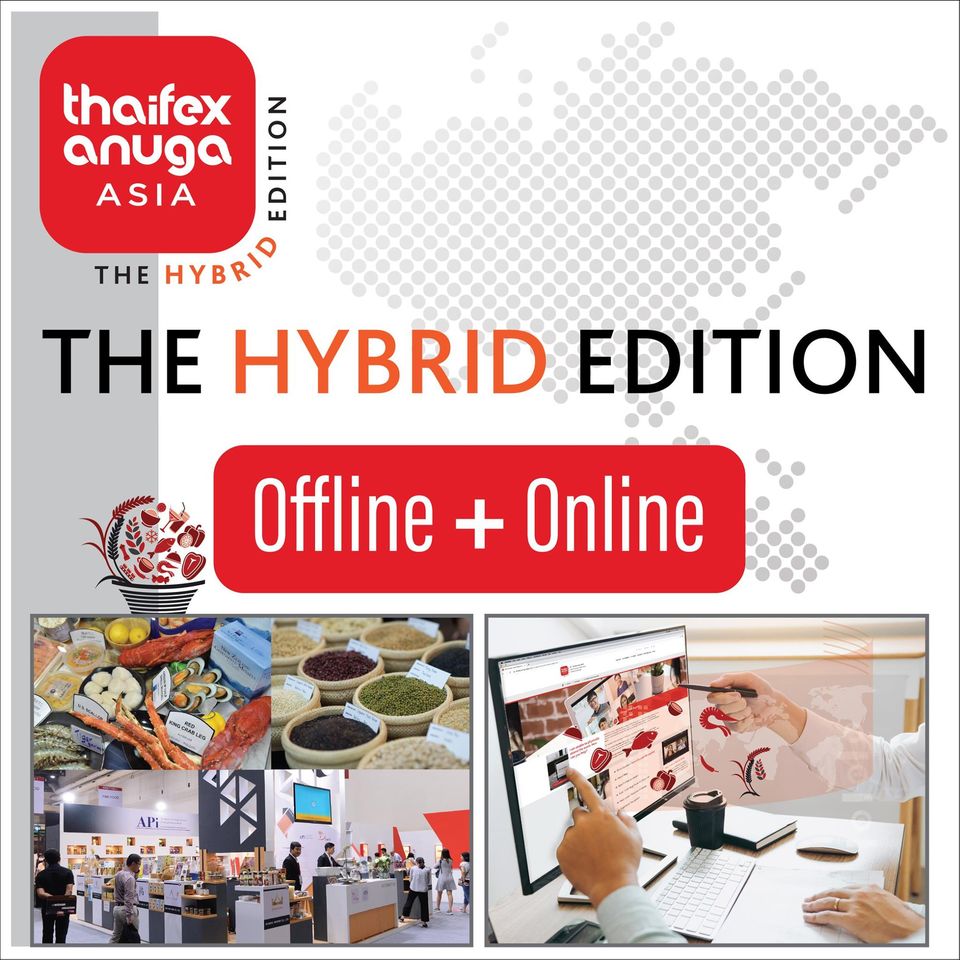
The Hybrid Edition คืออะไร?…มีความน่าสนใจอย่างไร?…
ความพิเศษของงานแสดงสินค้าอาหารและเครื่องดื่ม “THAIFEX-ANUGA ASIA 2020 The Hybrid Edition” แตกต่างจากการจัดงานในทุกๆ ปีที่ผ่านมาโดยถือเป็นมิติใหม่ของการจัดงานแสดงสินค้าที่ผสมผสาน 2 รูปแบบ เพื่อรองรับวิถีชีวิต New Normal คือ
1. การจัดงานจริง ที่มีบูธแสดงสินค้าภายในฮอลล์ให้ผู้เข้าชมงานเข้าเยี่ยมชม และสัมผัสสินค้าต่าง ๆ ได้
2. การจัดงานที่เรียกว่า Virtual Trade Fair หรือการจัดงานเสมือนจริงเพื่อให้คู่ค้า ผู้ซื้อจากต่างประเทศ และผู้ชมงานที่ไม่สามารถเดินทางมาชมงานจริงได้ สามารถชมงานผ่านช่องทางออนไลน์ โดยมีรายละเอียดสินค้าจากผู้จัดแสดงและยังสามารถเจรจาการค้าและจับคู่ธุรกิจ (Business Matching) ได้อีกด้วย
“THAIFEX-ANUGA ASIA 2020 The Hybrid Edition” จึงเป็นงานแสดงสินค้าอาหารและเครื่องดื่มที่จะเป็นครั้งแรกที่มีการจัดงานผสมผสาน 2 รูปแบบแม้มีวิกฤตหรืออุปสรรคในการเดินทาง แต่ด้วยการปรับตัวและนำเทคโนโลยีมาใช้อย่างลงตัว จึงช่วยให้ธุรกิจสามารถเดินหน้าต่อไปได้ ช่วยให้ Exhibitor ได้พบกับ Visitor และสามารถเจรจาการค้ากับผู้ซื้อได้จากทั่วโลก ทั้งในบริเวณงาน และผ่านออนไลน์ตลอด 24 ชั่วโมง!!!
แล้วพบกับ… “THAIFEX-ANUGA ASIA 2020 The Hybrid Edition”
ระหว่างวันที่ 22-26 กันยายน 2563 ณ อิมแพ็ค เมืองทองธานี
Did you know THAIFEX – Anuga Asia is going hybrid this year? “THAIFEX-ANUGA ASIA 2020 The Hybrid Edition”, is an exclusive event held in response to the new normal.
From pre- to post-show, we have got you covered!
Prior to show, connect with our exhibitors through our Online Exhibitor Search and do join us at our Future Food Experience+ webinar!
During the show days, you can expect live streaming and recorded contents on F&B trends, Innovative Product Highlights, Top 100 Searched Products, Live Demos and more!
After the show, be one of our Virtual Meet buyers to connect with our exhibitors!
Of course, we still look forward to welcoming you at the physical event, pre-register for our exhibition now!
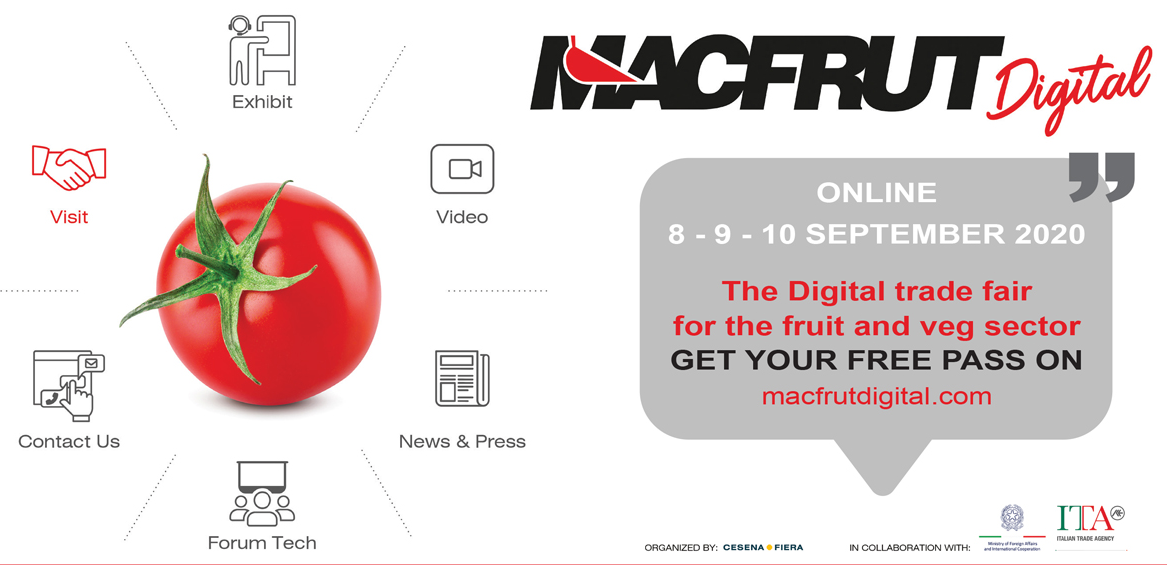
Macfrut 2020 งานแสดงสินค้าระดับนานาชาติสำหรับผักและผลไม้ จาก อิตาลี กับรูปแบบดิจิทัลครั้งแรกของวงการอุตสาหกรรมผักและผลไม้
งานแสดงสินค้าระดับนานาชาติสำหรับผักและผลไม้ของอิตาลี ที่จะจัดขึ้นในวันที่ 8 ถึง 10 กันยายน 2563 นี้ จะเปิดโอกาสทางธุรกิจให้กับธุรกิจอาหารและผักผลไม้ได้ทำการจับคู่ธุรกิจ แบบ B2B ผ่านแพลตฟอร์มดิจิทัลที่จะรวบรวมผู้ซื้อจากทั่วทุกมุมโลก เปิดโอกาสทำการตลาดต่างประเทศใหม่ ๆ สำหรับกลุ่มธุรกิจอาหาร
ด้วยนวัตกรรมแห่งการจัดการแสดงสินค้านี้ทำให้ Macfrut เป็นงานแสดงสินค้าดิจิทัลครั้งแรกสำหรับอุตสาหกรรมผักและผลไม้
การจัดงานครั้งนี้เป็นการจัดงานครั้งที่ 37 ซึ่งอิตาลีมีความมุ่งมั่นที่จะรักษาตำแหน่งการเป็นประเทศผู้นำของอุตสาหกรรมผักและผลไม้ในโลกเอาไว้ให้ได้
ดังนั้น การเปิดตัวงาน Macfrut สู่การจัดงานแบบดิจิทัล งานแสดงสินค้าเสมือนจริงอย่างมืออาชีพที่เรียบง่ายและมีประสิทธิภาพสำหรับผักและผลไม้จะจัดแสดงแบบเต็มรูปแบบทางออนไลน์
ด้วยแพลตฟอร์มการเชื่อมต่อสองทางนี้ ผู้เข้าร่วมจัดงานจะสามารถพูดคุยกับผู้ซื้อและผู้เชี่ยวชาญในอุตสาหกรรมที่จะเข้าร่วมในงานแสดงสินค้าเสมือนจริงตลอดระยะเวลาสามวันของการจัดงานในครั้งนี้
งาน Macfrut Digital จะเกิดขึ้นได้อย่างไร
นอกจากจะครอบคลุมกิจกรรมทางธุรกิจแล้ว Macfrut Digital ยังเป็นเจ้าภาพจัดฟอรัมงานสัมมนาด้านเทคนิค (Technical Forums) เพื่อส่งเสริมความรู้ เทคโนโลยีและนวัตกรรมในอุตสาหกรรมนี้อีกด้วย
โดยงานแสดงสินค้าระดับนานาชาติสำหรับผักและผลไม้เป็นงานที่เต็มเปี่ยมไปด้วยเนื้อหาและข้อมูลเชิงลึกทางเทคนิคในหัวข้อสำคัญของอุตสาหกรรมผักผลไม้โดยเสมอมา
ในฐานะที่เป็นส่วนหนึ่งของความมุ่งมั่นที่ยาวนานนี้ ภายในช่วงระยะเวลาสามวันของการจัดงาน Macfrut Digital จะเป็นเจ้าภาพจัดการประชุมออนไลน์ ซึ่งผู้เข้าชมจะสามารถดูสดได้บนแพลตฟอร์ม Natlive หลังจากลงทะเบียนโดยไม่เสียค่าใช้จ่ายใด ๆ ทั้งสิ้น
ทั้งนี้ หัวข้อในการจัดการแสดงงานในครั้งนี้จะครอบคลุมถึงนวัตกรรมด้านพืชสวน นวัตกรรมในการปลูกพืชในเรือนกระจก พาวิลเลียน Acquacampus และนวัตกรรมด้านการชลประทาน และ ฟอรัมให้ความรู้เรื่องสารกระตุ้นทางชีวภาพ (Biostimulant Forum)
นอกจากนี้ยังมีแพลตฟอร์มและกิจกรรมเฉพาะที่น่าสนใจสำหรับผู้เข้าร่วมงานอีกมากมายภายในงาน
ลงทะเบียนเข้าร่วมงาน ฟรี! ไม่มีค่าใช้จ่ายได้ที่ macfrutdigital.com
สำหรับข้อมูลเพิ่มเติม ติดต่อได้ที่
Italian Trade Agency (ITA), Bangkok office: E-mail: bangkok@ice.it
Cesena Fiera, Cesena Italy: E-mail: info@macfrut.com
From 8 to 10 September 2020, Italy’s international showcase for the fruit and vegetable sector will offer business opportunities B2B meeting through a digital platform that will bring together buyers from all over the world, opening up new international markets for the sector.
This innovative project makes Macfrut the first digital trade fair for the fruit and vegetable industry.
Now in its 37th edition, Italy is striving to reaffirm its leading position in the sector.
Hence the launch of Macfrut Digital, a professional, simple and effective virtual trade fair for the fruit and vegetable sector, which will be fully online.
Thanks to this interactive platform, exhibitors will be able to interact with the buyers and sector professionals who will participate in this three-day virtual event.
How Macfrut Digital will take place
In addition to covering the business side, Macfrut Digital will host Technical Forums.
The international trade fair for the fruit and vegetable sector has always been an event rich in content and technical insights on key topics in the industry.
As part of this long-standing commitment, during these three days Macfrut Digital will host a series of live-streamed conferences, which can be viewed on the Natlive platform, after registering free of charge.
The topics covered will include innovations in horticulture, innovations in the greenhouse sector, Acquacampus and innovations in irrigation, and the Biostimulant Forum.
The platform will also be available to exhibitors for dedicated events.
Free registration here: macfrutdigital.com
For more information, please contact for further information:
Italian Trade Agency (ITA), Bangkok office E-mail: bangkok@ice.it
Cesena Fiera, Cesena Italy E-mail: info@macfrut.com